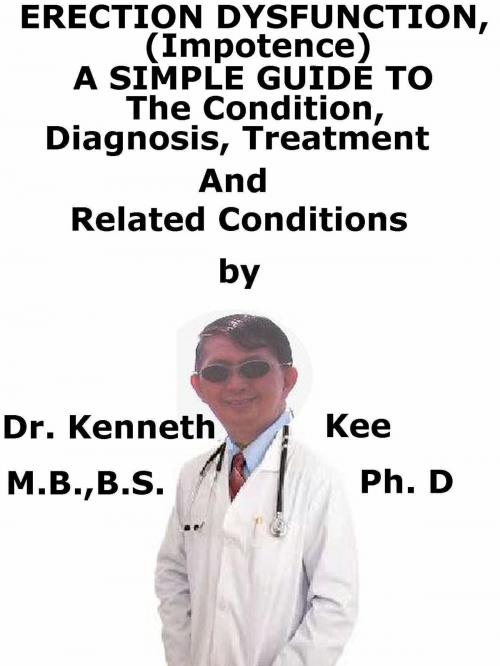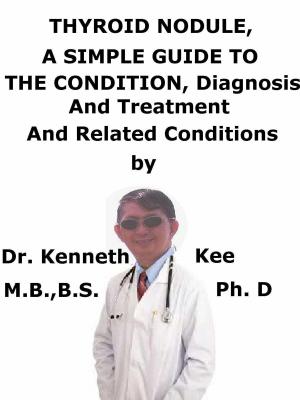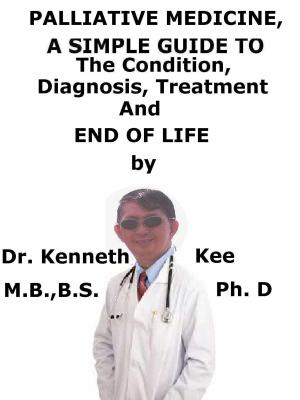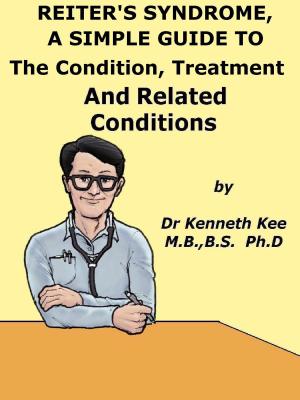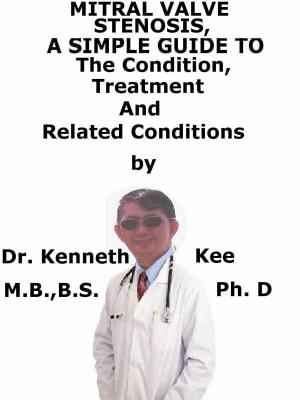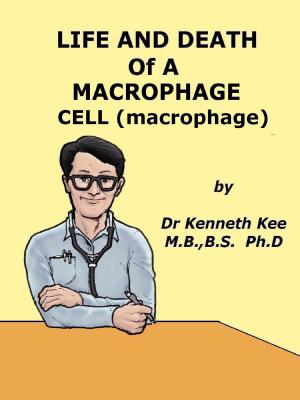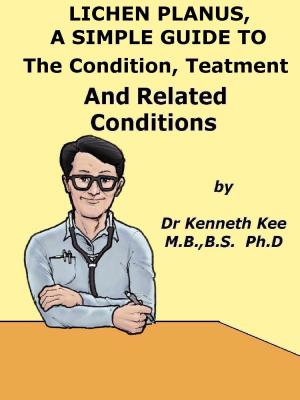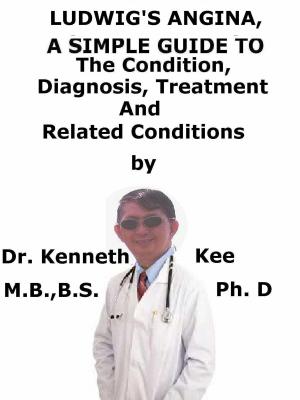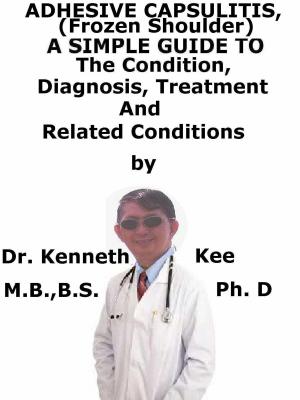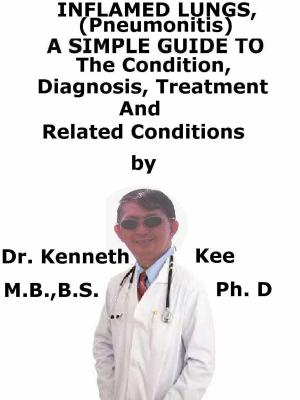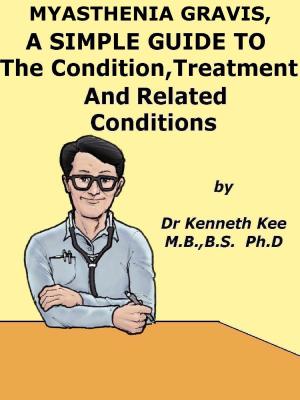Erectile Dysfunction, (Impotence) A Simple Guide To The Condition, Diagnosis, Treatment And Related Conditions
Nonfiction, Health & Well Being, Health, Men&| Author: | Kenneth Kee | ISBN: | 9781370757107 |
| Publisher: | Kenneth Kee | Publication: | November 7, 2016 |
| Imprint: | Smashwords Edition | Language: | English |
| Author: | Kenneth Kee |
| ISBN: | 9781370757107 |
| Publisher: | Kenneth Kee |
| Publication: | November 7, 2016 |
| Imprint: | Smashwords Edition |
| Language: | English |
Erectile dysfunction is a disorder in which a man is not capable to get or keep an erection hard enough for sexual intercourse.
ED is present when a man can:
1. Get an erection sometimes, though not every time
2. Get an erection, but it does not harden long enough for sexual intercourse
3. Not get an erection at any time
ED is sometimes called impotence.
Erectile dysfunction is defined by the WHO as "the consistent or recurrent inability of a man to attain and maintain a penile erection of the penis sufficient for sexual performance" for at least 3 months of erectile difficulty.
Erection occurs:
Once the brain feels a sexual urge, it passes impulses to local nerves in the penis that produce the muscles of the corpora cavernosa to relax.
Blood begins to flow in through the arteries and occupies the cavities in the corpora cavernosa like water filling a sponge.
The perfusing blood increases pressure in the corpora cavernosa, causing the penis expand.
The membrane tunica albuginea keeps the blood in the corpora cavernosa, thereby maintaining the erection.
The erection ceases after the man climaxes or after the sexual arousal has ended.
Then the veins open and the extra blood pass out of the spaces and back into the body.
Erection problems are frequent in elderly men.
Emotional causes are more frequent in younger men.
Physical causes are more frequent in older men.
Low levels of testosterone can result in erection problems
1. Vascular disease is the most frequent cause of ED.
a. Atherosclerosis (hardening of the arteries) is the production of a substance called plaque on the inner lining of arteries
b. High blood pressure
c. High cholesterol
d. Heart disease
All these conditions affect the blood flowing and out of the penis.
2. Diabetes: can induce nerve damage and damage to the blood vessel flow to the penis leadng to ED
3. Nerve disease
a. Such as spinal cord disease, nerve degeneration from alcohol can decrease the sensitivity of the nerves to the penis
b. Multiple sclerosis: an autoimmune disease that attacks the nerves
4. Hormonal problems
A man’s low levels of testosterone may not cause sufficient stimulation to induce erection
5. Surgical procedures of rectum, colon or prostate cancer and radiation treatment in the genital area often damage nerves and blood vessels to the penis.
6. Trauma such as Injury to the penis, spinal cord, prostate, bladder, or pelvis
Penile nerves function
1. Nerve testing
Tests such as the bulbocavernosus reflex test are used to determine if there is sufficient nerve feeling in the penis.
The doctor presses hard on the glans (head) of the penis which immediately causes the anus to contract if nerve function is normal.
2. Nocturnal penile tumescence (NPT) to check for normal nighttime erections
It is normal for a man to have five to six erections during sleep especially during rapid eye movement (REM).
The absence of erections may indicate a problem with nerve function or blood supply in the penis.
b. Rigidity monitoring
There are two methods for measuring changes in penile rigidity and circumference during nocturnal erection: snap gauge and strain gauge.
Counseling can manage anxiety, stress and marital problems
There are oral medications available to treat erectile dysfunction e.g. Viagra, Cialis, and Levitra.
If pills do not work, other treatment methods are:
a. Apply on cream (Vitaros) for ED
b. Hormonal Therapy for Erection Problems
Testosterone, cabergoline, and bromocriptine are hormonal treatments that may help with erectile dysfunction.
A medicine called prostaglandin E1 injected into the penis or inserted into the urethra improves blood flow to the penis.
Implanted devices, known as prostheses, can produce an erection in many men with ED.
TABLE OF CONTENT
Introduction
Chapter 1 Erectile Dysfunction
Chapter 2 Causes
Chapter 3 Symptoms
Chapter 4 Diagnosis
Chapter 5 Treatment
Chapter 6 Prognosis
Chapter 7 Male Orgasm
Chapter 8 Sexual Intercourse
Epilogue
Erectile dysfunction is a disorder in which a man is not capable to get or keep an erection hard enough for sexual intercourse.
ED is present when a man can:
1. Get an erection sometimes, though not every time
2. Get an erection, but it does not harden long enough for sexual intercourse
3. Not get an erection at any time
ED is sometimes called impotence.
Erectile dysfunction is defined by the WHO as "the consistent or recurrent inability of a man to attain and maintain a penile erection of the penis sufficient for sexual performance" for at least 3 months of erectile difficulty.
Erection occurs:
Once the brain feels a sexual urge, it passes impulses to local nerves in the penis that produce the muscles of the corpora cavernosa to relax.
Blood begins to flow in through the arteries and occupies the cavities in the corpora cavernosa like water filling a sponge.
The perfusing blood increases pressure in the corpora cavernosa, causing the penis expand.
The membrane tunica albuginea keeps the blood in the corpora cavernosa, thereby maintaining the erection.
The erection ceases after the man climaxes or after the sexual arousal has ended.
Then the veins open and the extra blood pass out of the spaces and back into the body.
Erection problems are frequent in elderly men.
Emotional causes are more frequent in younger men.
Physical causes are more frequent in older men.
Low levels of testosterone can result in erection problems
1. Vascular disease is the most frequent cause of ED.
a. Atherosclerosis (hardening of the arteries) is the production of a substance called plaque on the inner lining of arteries
b. High blood pressure
c. High cholesterol
d. Heart disease
All these conditions affect the blood flowing and out of the penis.
2. Diabetes: can induce nerve damage and damage to the blood vessel flow to the penis leadng to ED
3. Nerve disease
a. Such as spinal cord disease, nerve degeneration from alcohol can decrease the sensitivity of the nerves to the penis
b. Multiple sclerosis: an autoimmune disease that attacks the nerves
4. Hormonal problems
A man’s low levels of testosterone may not cause sufficient stimulation to induce erection
5. Surgical procedures of rectum, colon or prostate cancer and radiation treatment in the genital area often damage nerves and blood vessels to the penis.
6. Trauma such as Injury to the penis, spinal cord, prostate, bladder, or pelvis
Penile nerves function
1. Nerve testing
Tests such as the bulbocavernosus reflex test are used to determine if there is sufficient nerve feeling in the penis.
The doctor presses hard on the glans (head) of the penis which immediately causes the anus to contract if nerve function is normal.
2. Nocturnal penile tumescence (NPT) to check for normal nighttime erections
It is normal for a man to have five to six erections during sleep especially during rapid eye movement (REM).
The absence of erections may indicate a problem with nerve function or blood supply in the penis.
b. Rigidity monitoring
There are two methods for measuring changes in penile rigidity and circumference during nocturnal erection: snap gauge and strain gauge.
Counseling can manage anxiety, stress and marital problems
There are oral medications available to treat erectile dysfunction e.g. Viagra, Cialis, and Levitra.
If pills do not work, other treatment methods are:
a. Apply on cream (Vitaros) for ED
b. Hormonal Therapy for Erection Problems
Testosterone, cabergoline, and bromocriptine are hormonal treatments that may help with erectile dysfunction.
A medicine called prostaglandin E1 injected into the penis or inserted into the urethra improves blood flow to the penis.
Implanted devices, known as prostheses, can produce an erection in many men with ED.
TABLE OF CONTENT
Introduction
Chapter 1 Erectile Dysfunction
Chapter 2 Causes
Chapter 3 Symptoms
Chapter 4 Diagnosis
Chapter 5 Treatment
Chapter 6 Prognosis
Chapter 7 Male Orgasm
Chapter 8 Sexual Intercourse
Epilogue
